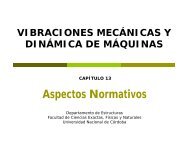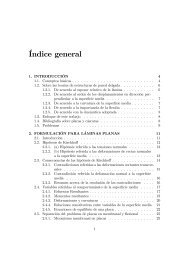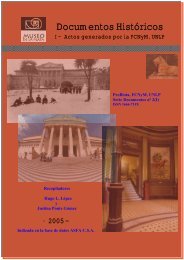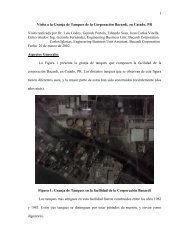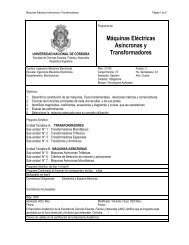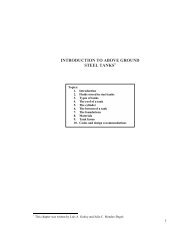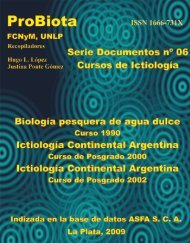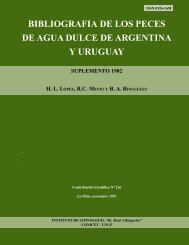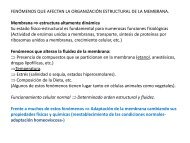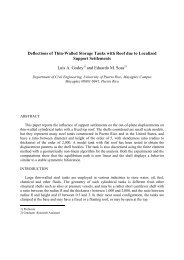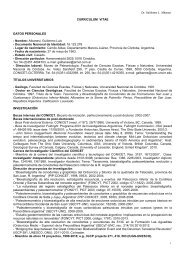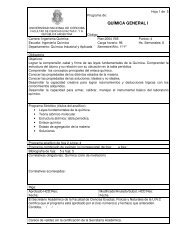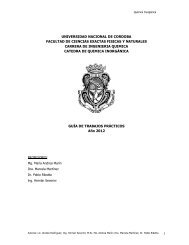Libro de resúmenes - Facultad de Ciencias Exactas, FÃsicas y ...
Libro de resúmenes - Facultad de Ciencias Exactas, FÃsicas y ...
Libro de resúmenes - Facultad de Ciencias Exactas, FÃsicas y ...
- No tags were found...
Create successful ePaper yourself
Turn your PDF publications into a flip-book with our unique Google optimized e-Paper software.
1.I JORNADA DE DIFUSIÓN DE INVESTIGACIÓN Y EXTENSIÓN EN INGENIERÍA QUÍMICA FCEFyN – UNC“I<strong>de</strong>as y perspectivas para construir futuros distintos”5 <strong>de</strong> Mayo <strong>de</strong> 2010POMOLOGICAL AND OIL CHEMICAL VARIABILITY IN WALNUT (JUGLANSREGIA L.) GENETIC RESOURCESMarcela L. Martínez 1 , Maria L.N. Albanese 2 , Agustin Nasjleti 3 , Diana O. Labuckas 2 ,Miguel A. Mattea 4 , Damián M. Maestri 5Tecnología <strong>de</strong> los Alimentos. FCEFyN-UNC. IMBIV-CONICET-ICTACe: mmartinez@efn.uncor.edu.2.ICTA -FCEFyN-UNC. Ce: laualbanese@hotmail.com, diana.labuckas@gmail.com.3 Estudiante <strong>de</strong> Ingeniería Química, FCEFyN-UNC, Ce:agus_nasjleti@hotmail.com4.<strong>Facultad</strong> <strong>de</strong> Ingeniería-UNRC -CONICET/Río Cuarto-Argentina.5.ICTA -FCEFyN-UNC. IMBIV-CONICET Ce: dmaestri@efn.uncor.edu.Key words: walnut varieties, pomological traits, oil chemistry, genotypical variationWalnuts (Juglans regia L.) from the varieties Chandler, Franquette, Hartley, Lara, Mayette,Serr, Sorrento and Tulare were studied in or<strong>de</strong>r to evaluate genotypical variations in somepomological traits and oil chemical characteristics. From each variety, three samples (1.5 kgeach) of healthy and mature fruits were picked by hand from the trees. Fruits were <strong>de</strong>void ofpericarp and then were dried at 30±2 ºC during 24 hours. Data on size and weight of nuts andkernels were obtained from 50 randomly selected fruits per sample. Based on the size(measured as transversal diameter, TD) nuts and kernels were classified as very small (TDbellow 25 mm), small (TD between 25 - 27 mm), medium (TD between 28 - 30 mm), large (TDbetween 31 - 35 mm), and very large (TD more than 35 mm). Kernels were used to obtainthree oil samples from each variety, using a pilot-plant hydraulic press. Acid, peroxi<strong>de</strong>, K 232 ,K 270 and colour values of the oil samples were <strong>de</strong>termined according to standard methods ofAOCS (1998). Total tocopherol content, fatty acid composition (gas-chromatography) andoxidative stability (Rancimat analysis) of the oils were <strong>de</strong>termined. Variability found in nutweight (NW) was between 9.35-14.9 g and in kernel weight (KW) 3.52-7.29 g, resulting inKW/NW ratios from 0.38 to 0.52. Nut and kernel size varied in a similar way indicating a goodnut filling. All varieties has good colours traits with more than 90% of their kernels fell into the“Extra light” and “Light” categories. Oil content ranged between 71.4-73.9%. Oils obtained bypressing presented low acid, peroxi<strong>de</strong>, K 232 , and K 270 values, and mo<strong>de</strong>rate (247-365 μg/g oil)total tocopherol contents. Oxidative stability, as measured by the Rancimat method, was poor(2.64-3.44 h) and it correlated positively with oleic and negatively with linolenic acid contents.Variations in unsaturated fatty acid (FA) contents were between 16.1-25.4% (oleic acid), 52.5-58.9% (linoleic acid), and 11.4-16.5% (linolenic acid). According to some fruit characteristicsand oil chemical composition, Serr and Tulare varieties may be evaluated as promisingmaterials for cultivation in regions un<strong>de</strong>r agroecological conditions similar to those ofGuanchín, at La Rioja province (Argentina).Resumen presentado en International Conference of Agricultural Engineering, XXXVIICongresso Brasileiro <strong>de</strong> Engenharia Agrícola, Iguazú, Brasil (2008).52



